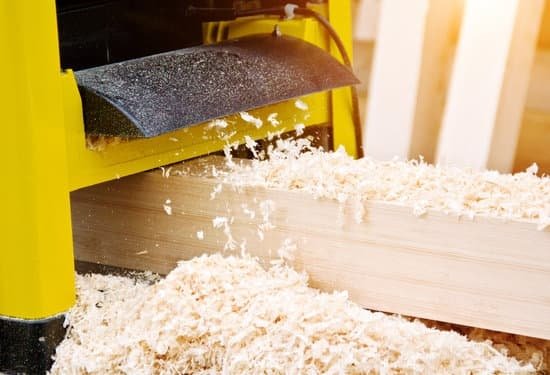Introduction
Woodworking is a craft and art form that requires the use of various tools and materials to shape, cut, and join pieces of wood. It involves a wide variety of skills including measuring, designing, planning and constructing projects with a special focus on detail. One of the most important steps in woodworking is preparing the boards for your project. Here are some tips on how to prepare a board for woodworking.
1. Measure & Cut: Start by measuring the board you want to use for your project. Once you have determined what size it needs to be trimmed down to, you can move on to cutting it with either a hand saw or power saw. After cutting, smooth down any raised edges left over from sawing with sandpaper or a belt sander if necessary.
2. Planing & Smoothness: Once the board has been cut to size, you’ll want to work on getting an even and smooth surface. This is done by planing both sides of the boards flat using a plane or jointer tool if necessary, then breaking sharp edges using sandpaper until all sides are somewhat even with each other (note: this is especially important when joining pieces together).
3. Dry Fitting: Before committing to joiner methods like biscuits, dowels or other fasteners, do a “dry fit” by checking how well your boards fit together without any type of glue or nails and make adjustments accordingly as needed (this allows you to make sure everything will fit perfectly before taking out more time consuming methods).
4. Bevels & Chamfers: If desired, you can also create slight bevels or chamfers around your board; these are great techniques for creating decorative trim lines around your projects such as adding small lip curves around cabinet doors and drawers for enhanced character. To do this simply use either a router tool (for larger applications) or chisel/plane for smaller areas that need detailed angles added in order to give them function and aesthetics alike.
To recap: 1) measure & cut 2) plane & smooth 3) dry fitting 4) bevels & chamfers are all important steps when prepping boards for woodworking projects!
Types of Boards & What to Look for When Selecting a Board
When selecting a board for woodworking, choosing the correct type of board is essential. The main types of boards that can be used for woodworking are hardwoods, softwoods, plywood, and composite board. Hardwoods are usually considered the strongest choice for woodworking pieces since they come from larger trees and have more strength and durability than softwoods. Softwoods usually come from smaller trees and contain less strength but may be better suited for some projects due to their cost or availability. Plywood is composed of layers of thin sheets glued together that makes it extremely strong while remaining lightweight, making it a great option for many woodworking projects. Composite boards are made of plastics and other materials combined together to create a strong bond which is relatively lightweight. When choosing any type of board, inspecting each board carefully before any purchase is always recommended so that you get the best possible quality with no defects or warping in the material.
Benefits & Challenges with Working with Different Types of Boards
Benefits of working with different types of boards come in the form of customization and creativity. Each type of board offers unique characteristics that may fit specific projects better than others. For example, hardwood boards are great for making furniture pieces because they are strong and durable. Softwood boards, such as pine or spruce, offer more flexibility and can be used to create detailed carvings or intricate shapes – something harder woods may not allow. Particleboard is popular as it’s lightweight while still offering a smooth surface for painting, staining, and glueing.
The main challenge when working with different types of boards is choosing the right one for your project. While certain types may offer certain benefits, using the wrong type can cause difficulties during construction and make it difficult to achieve the desired results. You need to know how each board will react to water, heat, sanding, drilling etc., and make sure you take measures to ensure the board isn’t damaged due to incompatibilities in your project designs. Additionally, select boards with knots or other imperfections carefully as these areas can cause problems during construction due to their extra strength or softness compared to surrounding areas.
Preparing the Board
Before you begin any woodworking project, you must first prep the board. This involves selecting an appropriate board and preparing it for use in any project.
To prepare a board for woodworking projects, you will need certain tools and materials. The tools you’ll need include a saw (preferably a handsaw or circular saw), chisel, sandpaper, clamps, rasp (optional), drill (optional), tapemeasure, level, marking device such as a pencil or marker, protective eyewear and gloves. In terms of materials needed to prep the board – make sure to have spare screws and nails of varying sizes that can be used to secure boards together.
Once you have all your necessary tools and materials gathered, it’s time to get started prepping the board. First examine the board for attached hardware such as nails or screws that could damage your saw blade upon cutting. If there are any embedded nails or screws in the board, remove them with a chisel before beginning.
Next measure the exact dimensions of your wood‐working project and mark this onto the wood using a marker or pencil so that it is clear which portion of the board needs to be cut away. Use your saw to cut away any excess material; use clamps to secure two pieces together if necessary during cutting process ensuring accuracy when making repetitive cuts like on identical boards edge joining table tops etc..Finally finish off by sanding down rough patches in order to create smooth surfaces for optimal performance when working with your new workpiece!
Sanding & Choosing the Right Sandpaper
Sanding is the single most important step when it comes to preparing a board for woodworking. Sanding allows you to smoothen out the surface of the wood and remove any imperfections or saw marks that may have been left behind in the cutting or milling process. Proper sanding is also necessary to ensure that any stain, paint, or finish adheres properly.
When sanding, start by using a course-grit sandpaper to get rid of most of the surface imperfections. You can then work your way down though increasingly finer grits until you reach the desired smoothness. Be sure to use dampened sandpaper as it prevents clogging and will last longer due to reduced dust build up. Additionally, take care not to over-sand and just scrape away small sections of unevenness at a time instead of overdoing it in one area – this reduces the risk of changing the shape and contours of your woodworking project.
Finally, remember that even different types of wood which look similar may need different types/grades of sandpaper for ideal results – with softer woods needing coarser grades than woods like mahogany and fir which are much more dense.
Joints
Joints are an important component of any woodworking project. There are several different types of joint that can be used to connect pieces of wood and achieve a specific desired result. Understanding the different types is paramount to selecting the right joint for the job.
A butt joint is one of the most basic and commonly used joints in woodworking, as it requires little effort to assemble and can be held together with nails or screws. It consists of two pieces abutting end to end and is most often used when joining boards along their edges, such as creating boxes or drawers.
A dowel joint involves drilling matching holes into each piece of wood that need to be connected. This allows for interchangeability between pieces, making them strong and secure. Dowels are especially appropriate for joining two pieces at right angles, such as the sides of a stool or armchair.
Mortise-and-tenon joints are popular for holding furniture together securely, since once assembled such joints offer a solid, unyielding connection that won’t come apart easily due to wear and tear. The tenon is a projecting tongue machined from one board while the mortise hole is carved in which it fits snugly yet retain enough flexibility so that it can be pushed through without needing glue. For added strength, the sections may be secured by peg dowels or splines inserted in the mortise hole prior to assembly.
It is also important to prepare a board before you begin any form of woodwork by using tools like saws, hammers and chisels as well as materials like sandpaper; this process will help eliminate roughness on the surface and make nailing easier later on. If you’re working with raw lumber, prepping usually involves milling off any bark that remains on the lumber before planing it down for uniform thickness — this will ensure easier joinery — then sanding until smooth before proceeding with your project’s individual steps
Planing & Shaping the Board
The first step when prepping a board for woodworking is to plan and shape the board. Depending on the project, you may need to plane and shape the wood in order to get it to the desired size and shape for your project. In order to do this, you will need some sort of planing or power tool such as an electric hand planer, belt sander, router, or jigsaw. You may also need some type of chisel or other tool for finer detailing. Once you have your tools ready, you’ll want to begin by making lengthwise cuts along one edge of the board. Afterward, use your planer or other power tool in a controlled manner to remove material from both faces until it is the desired thickness and width for your project. Next, make sure that all edges are flush and clean using a block plane or chisel if necessary. Finally, sand down all surfaces with progressively finer grits of sandpaper until all surfaces are smooth and even before beginning your project.
Avoiding Mistakes & Errors when Working with the Board
When working with a board for woodworking, it is important to take the time to properly prep the board in order to avoid making mistakes and errors. First, inspect the board for any damage or flaws that could potentially impede the quality or aesthetic of the finished project. Next, mark out the desired dimensions and cut the board with a hand or power saw. Once completed, sand or plane any edges that may have been left rough from the cuts. If necessary, make note of corners and apply filler to fill in voids for uniformity. If staining is desired, apply a coat of preservative along with an appropriate finish. Finally, apply sealer to prevent moisture damage and extend your wood’s lifetime durability. With careful preparation you can create beautiful projects without compromising safety or accuracy.
Finishing the Board
Before woodworking can take place, it is important to know how to prep a board. This includes finishing the board in order to protect it from the elements and make it last longer. Some of the different types of finishes available for prepping a board include painting, staining, varnishing, waxing and oiling.
Painting is one of the most common methods used for prepping a board. It provides an even coverage and excellent protection against wear and tear as well as deterring damage from moisture or water. Primer should be applied prior to painting as this will help to ensure a long-lasting finish.
Staining is another way of finishing that adds both colour and depth while also protecting the wood from environmental damage. Stains come in both water-based and oil-based variations. Water based stains are generally preferred due to their ease of use, quick drying time and lower VOC (Volatile Organic Compounds) emissions when compared to oil based options.
Wood can be preserved through application of varnish which creates an incredibly durable protective layer when applied correctly over primed surfaces. Clear or coloured varieties are available depending on desired effect with clear giving more protection against oils, liquid spills and air pollution than coloured varieties do.
Waxing is an old school method which still provides good protection against everyday wear whilst adding some shine when necessary. A liquid or paste wax is applied either by cloth directly onto the surface or between two coats of paint if you do not want too much additional shine added.
To give your board a more natural look try using an oil finish such as linseed oil which penetrates deep into the grain adding warmth with little gloss being added; another option would be tung or Danish oil which creates a thinner coating while still protecting areas exposed to heavier use such as cutting boards or work surfaces.
Final Thoughts & Maintenance Tips
Preparing a board for woodworking is a necessary step in the process, since an improperly prepped board could lead to a poorly-finished project. Here are some essential steps in properly prepping a board:
1. Properly inspect the wood and check for any signs of damage or blemishes. If there are any irregularities present, such as nails, knots, or warping, these should be addressed before proceeding any further.
2. Measure and mark the cut lines based on the desired dimensions of your project. Make sure to use a precision tool such as a combination square or combination ruler to get as exact measurements as possible.
3. Secure the board either to your workbench or a cutting jig so that it does not move during the cutting process. This will ensure accuracy and safety during sawing.
4. Use sharp tools when cutting to reduce tear out and splintering; this will help achieve an even surface that requires minimal sanding afterwards. If routing is part of your project plan, then use appropriate router bits for each type of job (straight bit for grooves and edges, flush trim bit for clean edges).
5. Once all pieces have been cut they should be thoroughly sanded to smooth out everything down to the last detail and finally finished according to specific rules of your desired application (varnish, stain, etc.).
Final Thoughts & Maintenance Tips: Always ensure you wear protective gear when woodworking to keep yourself safe from hazards like dust particles or fast moving slivers; it is also important that you store your tools safely away when not in use so they don’t accidentally impose any harm onto yourself or anyone else near them; after projects are completed you should always clean off any leftover fragments from surfaces as oils from certain woods could cause discolouration if left unattended; Finally make sure that you’re storing all boards in an area that isn’t susceptible to temperature changes which would cause warp in future projects!

Hi everyone! I’m a woodworker and blogger, and this is my woodworking blog. In my blog, I share tips and tricks for woodworkers of all skill levels, as well as project ideas that you can try yourself.





